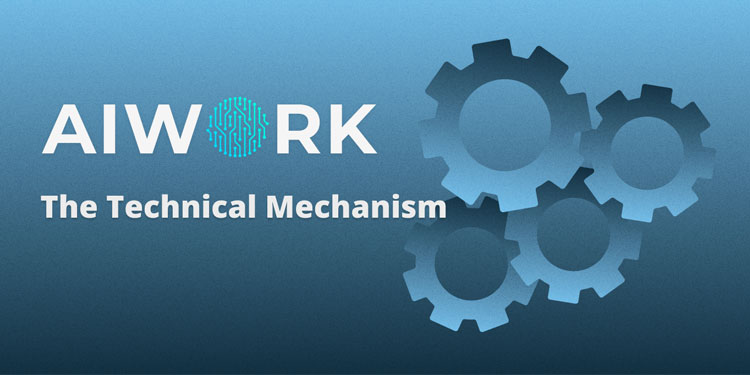AIWORK is a blockchain protocol creating a marketplace of AI computing resources and human experts for better online videos. The project aims to develop and validate datasets, helping make AI smarter decisions as it generates enhanced metadata for online video content. This is often described as a Proof-of-Intelligence model running on a decentralized and open-source blockchain protocol
The protocol is built on a consensus network of AI computing resources backed by human experts. Human experts and AI work in tandem to generate consistent and enhanced metadata for video content and consistently improve their work. Developers can deploy their decentralized applications (dApps) on AIWORK as well. All participants are rewarded with AWO, the native token, for their contributions.
Underlying Architecture of AIWORK
AIWORK is built on a standard Ethereum blockchain and a Plasma Network. This ensures that video metadata remains anchored to the Ethereum blockchain, where dApps can access and use the data, allowing them to earn or spend AWO. The AWO token is an ERC-20 token on Ethereum, while AIWORK is built on the Plasma Network.
Plasma is a scaling solution that enables “child” blockchains to be created while remaining anchored to the main chain for those who haven’t heard of it. Creating child blockchains allows for high scalability and low-cost transactions, and updates.
Ethereum, with the largest ecosystem of dApps, was the obvious first choice for AIWORK. Ethereum’s decentralization also allows it to access a host of features securely. Ethereum’s smart contracts offer the perfect trustless medium to bring AWO tokens onto the AIWORK Plasma Network and transfer them back to Ethereum from AIWORK’s Plasma chain.
All transactions completed on the AIWORK Plasma chain are signed by validators using a Proof of Stake consensus algorithm. Participants can also enter and exit the Plasma chain at will, all in a trustless manner, and claim tokens they’ve locked in smart contracts.
AIWORK’s Plasma Network will also consist of independent nodes (even independent from Ethereum) to mint blocks relying on a Proof of Stake consensus mechanism.
The AIWORK Ecosystem
The AIWORK ecosystem consists of five key participants, each critical to the functions of the platform. Let’s take a brief look at each of them.
Requestors
Requestors are the users who submit videos to AIWORK to receive normalized metadata. Essentially, they put out a work request for normalized metadata to be created using the AI and human experts who make up the network and pay for this work with the native AWO token.
Resource Providers
Resource providers are users who operate AIWORK’s decentralized, open-source AI software which runs in an isolated Docker container. It is based on Deep Learning frameworks and uses a Convolutional Neural Network, which is the premier architecture for image classification, and therefore ideal for videos.
Resource providers contribute computing resources to run AIWORK’s AI software which generates the metadata. Resource providers are also rewarded with AWO tokens for their services and resources.
Human Experts
Human experts work in tandem with the AI, verifying the output generated by the AI. They also provide added metadata that the AI cannot generate, which can happen for several reasons. On top of ensuring that Requestors receive high-quality results, updates to the metadata can also be fed back into the AI, helping it improve over time. The human experts are also rewarded with AWO tokens for their efforts.
Validators
Validators are users who stake their AWO tokens to secure the network and perform a series of tasks.
Tasks performed by validators include:
- Validators pick up video jobs, organize them, and distribute them to providers.
- They then validate the results submitted by the resource providers and human experts.
- Validators also analyze and combine the results sent to them, creating a ContentGraph — or content safety score — for each video.
Additionally, validators also mint new blocks on AIWORK and assign rewards to human experts.
If a validator does not perform the tasks according to the consensus mechanism, they stand to lose a significant portion of their stake.
Developers
Software developers play a critical role in the AIWORK ecosystem, and they develop vital dApps that work with the AIWORK ecosystem or use the ContentGraph.
Currently, developers on AIWORK are at the center of building two critical applications: an open-source search engine for video content and an advertisement matching service with the relevant API.
Closing Thoughts
AIWORK aims to tackle long-standing issues in online video content that stem from incomplete and inconsistent metadata. It also seeks to address the high degree of centralization in the video space, enabling consumers to control the content they view.
They’re reworking the video space, building a mutually beneficial system for better metadata creation — one that works in favor of viewers and creators alike.
